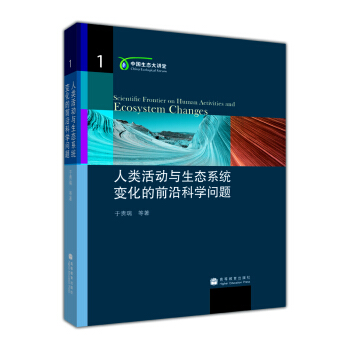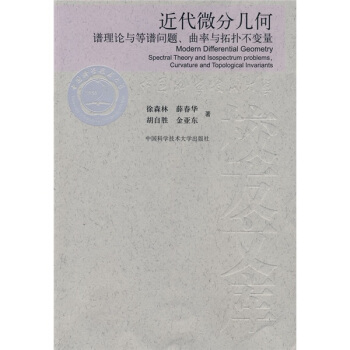![國外優秀生命科學教學用書:基礎分子生物學(影印版)(附光盤) [Fundamental Molecular Biology]](https://pic.tinynews.org/10000270/566e683cN770111dd.jpg)

具體描述
內容簡介
The beginnings of molecular biology , The structure of DNA ,Genome organization: from nucleotides to chromatin, The versatility of RNA, From gene to protein, DNA replication and telomere maintenance, DNA repair and recombination, Recombinant DNA technology and molecular cloning。目錄
1 The beginnings of molecular biology1.1 Introduction
1.2 Historical perspective
Insights into heredity from round and wrinkled peas: Mendelian genetics
Insights into the nature of hereditary materiaL: the transforming principle is DNA
Creativity in approach leads to the one gene-one enzyme hypothesis
The importance of technological advances: the Hershey-Chase experiment
A model for the structure of DNA: the DNA double helix
Chapter summary
Analytical questions
Suggestions for further reading
2 The structure of DNA
2.1 Introduction
2.2 Primary structure: the components of nucleic acids
Five-carbon sugars
Nitrogenous bases
The phosphate functional group
Nucleosides and nucteotides
2.3 Significance of 5 and 3
2.4 Nomenclature of nucleotides
2.5 The length of RNA and DNA
2.6 Secondary structure of DNA
Hydrogen bonds form between the bases
Base stacking provides chemical stability to the DNA double helix
Structure of the Watson-Crick DNA double helix
Distinguishing between features of alternative double-helical structures
DNA can undergo reversible strand separation
2.7 Unusual DNA secondary structures
Slipped structures
Cruciform structures
Triple helix DNA
Disease box 2.1 Friedreichs ataxia and triple helix DNA
2.8 Tertiary structure of DNA
Supercoiling of DNA
Topoisomerases relax supercoiled DNA
What is the significance of supercoiting in vivo?
Disease box 2.2 Topoisomerase-targeted anticancer drugs
Chapter summary
Analytical questions
Suggestions for further reading
3 Genome organization: from nucleotides to chromatin
3.1 Introduction
3.2 Eukaryotic genome
Chromatin structure:historical perspective
Histones
Nucleosomes
Beads-on-a-string:the 10 nm fiber
The 30 nm fiber
Loop domains
Metaphase chromosomes
Alternative chromatin structures
3.3 Bacterial genome
3.4 Plasmids
3.5 Bacteriophages and mammalian DNA viruses
Bacteriophaqes
Mammalian DNA Viruses
3.6 Organelle genomes:chloroplasts and mitochondria
Chloroplast DNA(cpDNA)
Mitochondrial DNA (mtDNA)
Disease box 3.1 Mitochondrial DNA and disease
3.7 RNA-based genomes
Eukaryotic RNA viruses
Retroviruses
Viroids
Other Subviral pathoqens
Disease box 3.2 Avian flu
Chapter summary
Analytical questions
Suggestions for further reading
4 The versatility of RNA
4.1 Introduction
4.2 Secondary structure of RNA
Secondary structure motifs in RNA
Base-paired RNA adopts an A-type double helix
RNA helices often contain noncanonical base pairs
4.3 Tertiary structure of RNA
tRNA structure:important insiqhts into RNA structural motifs
Common tertiary structure motifs in RNA
4.4 Kinetics of RNA folding
4.5 RNA is involved in a wide range of cellular processes
4.6 Historical perspective:the discovery of RNA catalysis
Tetrahymena qroUP I intron ribozyme
RNase P ribozyme
Focus box 4.1:The RNA World
4.7 Ribozymes catalyze a variety of chemical reactions
Mode of ribozyme action
Large ribozymes
Small ribozymes
Chapter summary
Analytical questions
Suggestions for further reading
5 From gene to protein
5.1 Introduction
5.2 The central dogma
5.3 The genetic code
Translating the genetic code
The 21st and 22nd genetically encoded amino acids
Role of modified nucleotides in decoding
Implications of codon bias for molecular biologists
5.4 Protein structure
Primary structure
Secondary structure
Tertiary structure
Quaternary structure
Size and complexity of proteins
Proteins contain multiple functional domains
Prediction of protein structure
5.5 Protein function
Enzymes are biological catalysts
Regulation of protein activity by post-translational modifications
Allosteric regulation of protein activity
Cyclin-dependent kinase activation
Macromolecular assemblages
5.6 Protein folding and misfolding
MoLecular chaperones
Ubiquitin-mediated protein degradation
Protein misfolding diseases
Disease box 5.1 Prions
Chapter summary
Analytical questions
Suggestions for further reading
6 DNA replication and telomere maintenance
6.1 Introduction
6.2 Historical perspective
Insight into the mode of DNA replication: the Meselson-Stahl experiment
Insight into the mode of DNA replication: visualization of replicating bacterial DNA
6.3 DNA synthesis occurs from 5→3
6.4 DNA polymerases are the enzymes that catalyze DNA synthesis
Focus box 6.1 Bacterial DNA polymerases
6.5 Semidiscontinuous DNA replication
Leading strand synthesis is continuous
Lagging strand synthesis is discontinuous
6.6 Nuclear DNA replication in eukaryotic cells
Replication factories
Histone removal at the origins of replication
Prereplication complex formation at the origins of replication
Replication Licensing: DNA only replicates once per cell cycle
Duplex unwinding at replication forks
RNA priming of Leading strand and Lagging strand DNA synthesis
Polymerase switching
Elongation of Leading strands and Lagging strands
Proofreading
Maturation of nascent DNA strands
Termination
Histone deposition
Focus box 6.2 The naming of genes involved in DNA replication
Disease box 6.1 Systemic lupus erythematosus and PCNA
6.7 Replication of organelle DNA
Models for mtDNA replication
Replication of cpDNA
Disease box 6.2 RNase MRP and cartilage-hair hypoplasia
6.8 Rolling circle replication
6.9 Tetomere maintenance: the role of tetomerase in DNA replication, aging, and cancer
Telomeres
Solution to the end replication problem
Maintenance of telomeres by telomerase
Other modes of telomere maintenance
Regulation of telomerase activity
Telomerase, aging, and cancer
Disease box 6.3 Dyskeratosis congenita: loss of telomerase function
Chapter summary
Analytical questions
Suggestions for further reading
7 DNA repair and recombination
7.1 Introduction
7.2 Types of mutations and their phenotypic consequences
Transitions and transversions can lead to silent, missense, or nonsense mutations
Insertions or deletions can cause frameshift mutations
Expansion of trinucleotide repeats leads to genetic instability
7.3 General classes of DNA damage
Single base changes
Structural distortion
DNA backbone damage
Cellular response to DNA damage
7.4 Lesion bypass
7.5 Direct reversal of DNA damage
7.6 Repair of single base changes and structural distortions by removal of DNA damage
Base excision repair
Mismatch repair
Nucleotide excision repair
Disease box 7.1 Hereditary nonpolyposis colorectal cancer: a defect in mismatch repair
7.7 Double-strand break repair by removal of DNA damage
Homologous recombination
Nonhomologous end-joining
Disease box 7.2 Xeroderma pigmentosum and related disorders: defects in nucleotide excision repair
Disease box 7.3 Hereditary breast cancer syndromes: mutations in BRCA1 and BRCA2
8 Recombinant DNA technology and molecular cloning
9 Tools for analyzing gene expression
10 Transcription in prokaryotes
11 Transcription in eukaryotes
12 Epigenetic and monoallelic gene expression
13 RNA processing and post-transcriptional gene regulation
14 The mechanism of translation
15 Genetically modified organisms: use in basic and applied research
16 Genome analysis:DNA typing,genomics and beyond
17 Medical molecular biology
Glossary
Index
精彩書摘
Other subviral pathogensOther subviral pathogens include satellite RNAs and virusoids. Viroids replicate autonomously by using host-encoded RNA polymerase. In contrast, satellite RNAs multiply only in the presence of a helper virus that provides the appropriate RNA-dependent RNA polymerase. Some of the larger satellite RNAs may encode a protein. Satellite RNAs are found in plants (e.g. satellite tobacco necrosis virus) and animals. A well known human satellite RNA is hepatitis delta virus (HDV). HDV is a small single-stranded RNA satellite of hepatitis B virus.
A virusoid is an RNA molecule that does not encode any proteins and depends on a helper virus for replication and capsid formation. Virusoids occur in association with viruses causing plant diseases such as velvet tobacco mottle and subterranean clover mottle. They are sometimes regarded as a subtype of satellite RNA. The virusoid genome resembles a viroid and consists of circular, single-stranded RNA with self-cleaving activity (see Section 4.7).
Chapter summary
The genomes of most organisms are made of DNA; certain viruses and subviral pathogens have RNA genomes. Eukaryotic DNA combines with basic protein molecules called histones to form structures known as nucleosomes. Each nucleosome contains four pairs of core histones (H2A, H2B, H3, and H4) in a wedge-shaped disk, around which is wrapped 146 bp of DNA. The linker histone H1 is bound to DNA between the core histone octamers, where the DNA enters and exits the nucleosome. The first order of chromatin folding is represented by a string of nucleosomes. This 10 mn nucleosome fiber is further folded into a 30 nm fiber in a zig-zag ribbon structure, which is then folded into loop domains, and finally the metaphase chromosome. Each chromosome is composed of one linear, double-stranded DNA molecule.
Bacterial chromosomal DNA exists as one double-stranded, circular DNA molecule organized into a condensed structure called a nucleoid. Plasmids are self-rephcating small, double-stranded, circular or linear DNA molecules carried by bacteria, some fungi, and some higher plants. Plasmids are important tools for recombinant DNA technology. Bacteriophages and mammalian DNA viruses have DNA genomes that occur in a variety of forms, ranging from double-stranded to single-stranded DNA and linear to circular forms. Viruses either package their genomes with their own basic proteins, or use host cell histones.
Both mitochondria and chloroplasts contain their own genetic information. The small, double-stranded DNA genomes are usually, but not always, circular and there are multiple copies per organdie. Organelle genomes are maternally inherited.
前言/序言
The fast pace of modern molecular biology research is driven by intellectual curiosity and major challenges in medicine, agriculture, and industry. No discipline in biology has ever experienced the explosion in growth and popularity that molecular biology is now undergoing. There is intense public interest in the Human Genome Project and genetic engineering, due in part to fascination with how our own genes influence our lives. With this fast pace of discovery, it has been difficult to find a suitable, up-to-date textbook for a course in molecular biology. Other textbooks in the field flail into two categories: they are either too advanced, comprehensive, and overwhehmingly detailed, with enough material to fill an entire year or more of lectures, or they are too basic, superficial, and less experhmental in their approach. It is possible to piece together literature for a molecular biology course by assigning readings from a variety of sources. However, some students are poorly prepared to learn material strictly from lectures and selected readings in texts and the primary literature that do not match exactly the content of the course. At the other end, instructors may find it difficult to decide what topics are the most important to include in a course and what to exclude when presented with an extensive array of choices. This textbook aims to fill this perceived gap in the market. The intent is to keep the text to a manageable size while covering the essentials of molecular biology. Selection of topics to include or omit reflects my view of molecular biology and it is possible that some particular favorite topic may not be covered to the desired extent. Students often complain when an instructor teaches "straight from the textbook," so adding favorite examples is encouraged to allow instructors to enrich their course by bringing to it their own enthusiasm and insight.Approach
A central theme of the textbook is the continuum of biological understanding, starting with basic properties of genes and genomes, RNA and protein structure and function, and extending to the complex, hierarchical interactions fundamental to living organisms. A comprehensive picture of the many ways molecular biology is being applied to the analysis of complex systems is developed, including advances that reveal fundamental features of gene regulation during cell growth and differentiation, and in response to a changing nvironment, as well as developments that are more related to commercial and medical applications. Recent advances in technology, the process and thrill of discovery, and ethical considerations in molecular biology research are emphasized. The text highlights the process of discovery - the observations, the questions, the experimental designs totest models, the results and conclusions - not just presenting the "facts." At the same time the language of molecular biology is emphasized, and a foundation is built that is based in fact. It is not feasible to examine every brick in the foundation and still have time to view the entire structure. However, as often as possible real examples of data are shown, e.g. actual results of an EMSA, Western blot, or RNA splicing assay. Experiments are selected either because they are classics in the field or because they illustrate a particular approach frequently used by molecular biologists to answer a diversity of questions.
用戶評價
評分這本《基礎分子生物學》的翻譯(雖然是影印版,但中文的圖書名稱和內容介紹吸引瞭我)給我留下瞭一種深刻的印象,它似乎在力求一種嚴謹又不失可讀性的平衡。我曾遇到過一些譯本,要麼過於晦澀,要麼過於口語化,都難以真正幫助學習者理解那些復雜而精妙的生命過程。這本書的中文書名“基礎分子生物學”雖然聽起來很普通,但結閤瞭“國外優秀教學用書”和“影印版(附光盤)”這些信息,我預感這本書的教學設計一定是經過精心打磨的。它很可能不僅僅是知識的堆砌,而是有清晰的邏輯脈絡,循序漸進地引導讀者進入分子生物學的殿堂。光盤的存在,更是讓我對它寄予厚望。我猜想,光盤中可能包含瞭豐富多樣的多媒體資源,比如精美的三維動畫,用動態的方式展示DNA復製、轉錄、翻譯等關鍵過程,這對於理解那些肉眼看不見的微觀世界至關重要。也可能是一些經典的實驗操作演示,讓我們能夠“親眼”看到科學傢們是如何進行研究的,感受科學的魅力。如果真的如此,那麼這本書的學習體驗將是革命性的,遠遠超越瞭單純的文字閱讀。
評分我一直對生命科學領域,尤其是分子生物學部分,有著濃厚的興趣,但國內的一些教材,在內容更新的速度上,以及對前沿研究的涵蓋上,總顯得有些滯後。當我看到這本《基礎分子生物學》(影印版)時,我立刻被它“國外優秀教學用書”的定位所吸引。這意味著這本書很可能凝聚瞭國際上在分子生物學教學方麵的最新理念和最前沿的知識。我所期待的是,它能夠提供一個更全麵、更深入的視角,讓我瞭解分子生物學在當前研究中的最新進展,以及那些支撐著現代生命科學發展的核心理論。影印版的形式,我個人也比較喜歡,它能夠讓我直接接觸到原汁原味的內容,避免瞭翻譯過程中可能齣現的理解偏差。而附帶的光盤,則是我最看重的一部分。我猜測裏麵可能包含瞭最新的研究論文摘要、相關的在綫數據庫鏈接,甚至是著名科學傢關於某個領域的講座視頻。這些資源如果能夠獲得,無疑會極大地拓寬我的視野,讓我能夠站在巨人的肩膀上,更準確地把握分子生物學的發展脈絡。
評分拿到這本書的時候,我第一眼就被它的整體風格所吸引。作為一本影印版,它保留瞭原著的版式和設計,我一直認為,好的教材,其排版設計本身就是一種教學語言。我注意到書中可能采用瞭大量的圖錶、插畫,並且這些視覺元素不是隨意擺放的,而是與文字內容緊密結閤,相互補充,相互印證。我之前在學習分子生物學時,常常會因為文字的描述不夠直觀而感到睏惑,尤其是當涉及到復雜的信號通路或者分子間的相互作用時,如果沒有清晰的示意圖,很難在大腦中形成完整的畫麵。這本書的齣版,尤其是它被定位為“國外優秀生命科學教學用書”,讓我有理由相信,它在視覺化呈現復雜的生命科學概念方麵一定做得非常齣色。附帶的光盤,我猜測會進一步強化這種優勢,或許裏麵有更高質量的、可交互的圖形,甚至是一些模擬實驗,能夠讓我們在電腦上進行操作,加深對實驗原理的理解。這種多感官的學習方式,對於提升學習效果和激發學習興趣是顯而易見的。
評分對於我而言,一本好的教學用書,不僅僅是內容的詳實,更在於它能否激發我的求知欲,並且提供有效的學習路徑。這本書的標題“基礎分子生物學”,聽起來就很有吸引力,並且“國外優秀教學用書”的標簽,讓我對其教學方法的科學性和有效性充滿瞭信心。我猜想,這本書的編寫者一定花瞭大量心思去設計學習過程,它可能不是簡單地羅列事實,而是通過提齣問題、引導思考的方式,讓讀者主動去探索知識。例如,在介紹某個重要概念時,書中可能會設置一些思考題,或者提供一些案例分析,讓我們在解決問題的過程中,加深對知識的理解和記憶。影印版的形式,我個人認為很有意義,它能讓我接觸到最直接的學術錶達方式。而光盤的附帶,我更是充滿期待,我希望光盤裏的內容不僅僅是輔助材料,而是能夠提供一些互動性的學習體驗,比如一些在綫習題,或者虛擬實驗平颱,讓我們能夠邊學邊練,及時檢驗學習效果。這種以學生為中心的教學設計,對於提升學習效果至關重要。
評分這本書的裝幀和印刷質量都相當不錯,紙張手感很好,不是那種容易泛黃的劣質紙。封麵設計簡潔大方,雖然是影印版,但細節處理得很到位,沒有模糊不清或者錯位的現象。更值得一提的是,它附帶的光盤,讓我對這本書的價值有瞭更深的期待。我一直對分子生物學這個領域充滿瞭好奇,也嘗試過一些國內的教材,但總覺得在內容的深度和廣度上,還有一些地方不夠盡如人意。聽說這本書是國外優秀的生命科學教學用書,我相信它在教學方法的創新和內容編排上一定有獨到之處。光盤裏的內容,我猜測可能包含瞭一些教學演示、實驗視頻,甚至是互動式的小測驗,這些都是在傳統紙質書無法提供的,能夠極大地增強學習的趣味性和效率。我非常期待能夠通過這本書,對分子生物學有一個更係統、更深入的認識,同時也希望光盤中的資源能夠幫助我更好地理解那些抽象的概念,將理論知識與實踐聯係起來。這本書的齣版,無疑為像我這樣的自學者提供瞭一個非常寶貴的學習工具,它的存在本身就代錶著一種對知識傳播的認真和投入,這一點我非常欣賞。
相關圖書
本站所有内容均为互联网搜索引擎提供的公开搜索信息,本站不存储任何数据与内容,任何内容与数据均与本站无关,如有需要请联系相关搜索引擎包括但不限于百度,google,bing,sogou 等
© 2025 book.tinynews.org All Rights Reserved. 静思书屋 版权所有









![科學實在論與心靈的可塑性 [Scientific realism and the Plasticity of Mind] pdf epub mobi 電子書 下載](https://pic.tinynews.org/10151780/78cfe115-d8b8-491d-9e8c-a14971b584d9.jpg)










